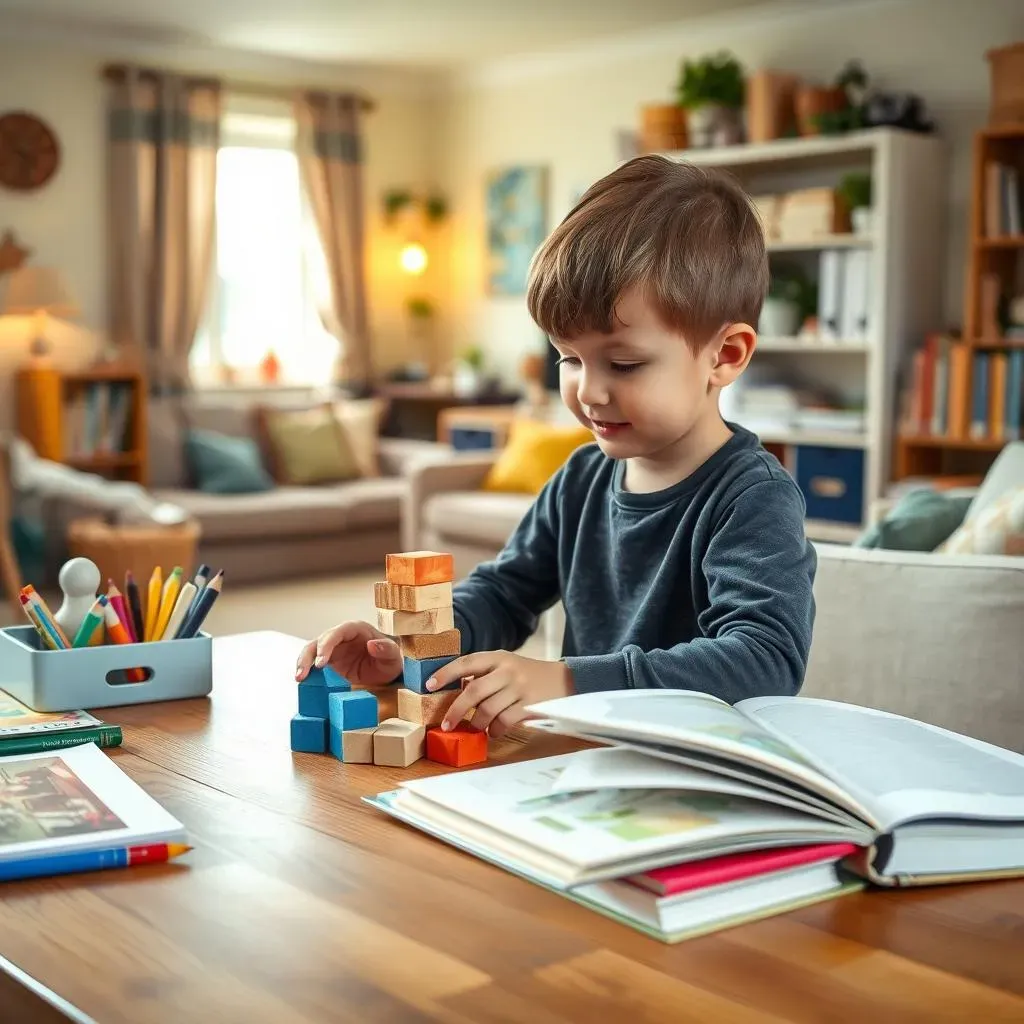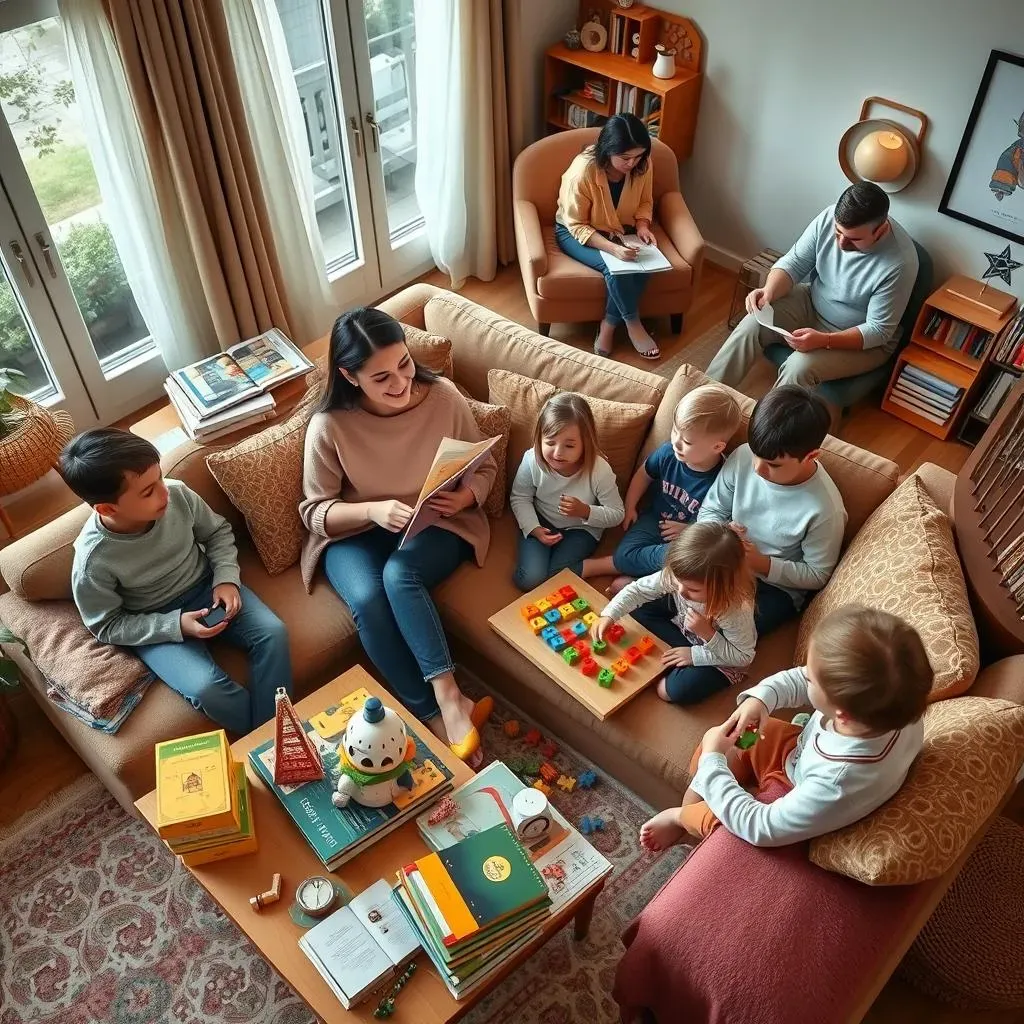Table of Contents
Juggling tiny humans and teaching them to read can feel like a circus, especially when you're trying to figure out a kindergarten homeschool schedule. It's easy to get lost in a sea of Pinterest-perfect classrooms and rigid timetables, but let's be real, most of us are just trying to make it through the day with a little learning thrown in. I get it. I've been there, covered in paint, surrounded by half-finished projects, and wondering if my kid will ever learn their ABCs. This article isn't about creating an unattainable schedule that leaves you feeling like a failure. Instead, we'll explore how to build a flexible kindergarten homeschool schedule that fits your family, your kid's unique learning style, and your sanity. We'll cover creating a daily rhythm, choosing the right subjects and curriculum, and, most importantly, how to make it all work without losing your mind. So, if you're ready to ditch the overwhelm and create a homeschool kindergarten schedule that's both effective and enjoyable, stick around, you’re in the right place.
Creating a Daily Rhythm for Your Kindergarten Homeschool Schedule
Creating a Daily Rhythm for Your Kindergarten Homeschool Schedule
The Magic of a Flexible Routine
Forget rigid schedules that make you feel like a drill sergeant. A daily rhythm is more like a dance than a march. It's about creating a predictable flow to your day, not a minute-by-minute breakdown. Think of it as a gentle guide, not a strict rulebook. For example, instead of saying "at 9:00 we do math," try "after breakfast, we'll work on numbers." This allows for those inevitable morning delays, like when someone decides to use their toast as a paintbrush. It's about being adaptable and responding to your child's cues. After all, a happy child learns better than a stressed-out one, and that goes for parents too.
We're not aiming for perfection; we're aiming for a good enough flow that works for everyone. Some days, that might mean more time playing outside, and some days, it might mean extra story time on the couch. The key is to have a general structure that provides comfort and predictability without feeling like a prison sentence. The goal is to create a routine that feels natural and enjoyable for both you and your child. It should be a rhythm that supports your family's life, not the other way around.
Sample Daily Rhythm
Time | Activity |
|---|---|
7:00-8:00 AM | Wake up, breakfast, and morning snuggles |
8:00-9:00 AM | Morning learning activities (reading, math games) |
9:00-10:00 AM | Outdoor play or nature walk |
10:00-11:00 AM | Creative activities (art, music) |
11:00-12:00 PM | Lunch and quiet reading time |
Listen to Your Child's Cues
Your child is the best indicator of what's working and what's not. Are they engaged during your "learning time," or are they staring out the window, dreaming of dinosaurs? If the latter, it's time to change things up. Maybe they need a movement break, a snack, or a different approach to the material. Don't be afraid to ditch the schedule altogether for a day and just follow their lead. Sometimes, the best learning happens when you’re least expecting it, like during an impromptu bug hunt in the backyard. The most important thing is that your child is happy, curious, and excited to learn.
Remember, a daily rhythm is a tool, not a master. It's there to help guide your day, not dictate it. Be flexible, be patient, and most importantly, be present. The goal isn’t to create a mini-genius; it's to foster a love of learning and spend quality time with your child. And honestly, some days, that looks like a messy, chaotic, and utterly wonderful adventure, and that’s perfectly okay.
Essential Subjects and Curriculum Choices for Your Kindergarten Homeschool Schedule
Essential Subjects and Curriculum Choices for Your Kindergarten Homeschool Schedule
The Building Blocks of Kindergarten Learning
so you've got a rhythm going, but what exactly do you teach? Kindergarten isn't about cramming a ton of facts into tiny heads. It's about sparking curiosity and building a foundation for future learning. Think of it like building a house, you need a solid base before you start adding fancy features. For kindergarten, that means focusing on language arts, math, and a good dose of exploration. It's about developing a love for reading, understanding basic numbers, and learning about the world around them. Don't feel pressured to replicate a traditional classroom. Homeschooling gives you the freedom to tailor learning to your child's individual needs and interests.
Language arts is more than just learning the alphabet. It's about falling in love with stories, playing with sounds, and building a rich vocabulary. Math isn't just about numbers; it's about understanding quantity, patterns, and shapes. And exploration? That’s about getting hands dirty, asking questions, and discovering the magic of the world around us. This is the time to focus on the joy of learning, not just the end result. It's about planting seeds of curiosity that will blossom throughout their educational journey. We are building a love for learning not just forcing the kids to learn.
Curriculum Options (and My Personal Faves!)
Now, the big question: What curriculum should you use? There are so many options out there, it can feel overwhelming. For language arts, I'm a big fan of programs that are hands-on and engaging, like ABC Hear Do, it is a great way to learn phonics and letters, also Explode the Code for building those essential reading skills. And for those of you who are nature lovers like me, I recommend Wonder of Nature Early Years Collection. It's a great way to connect learning with the outdoors. For math, I've used Handwriting Without Tears, and Saxon Math and they are both great for building a solid foundation. But remember, curriculum is just a tool. You're the teacher, and you have the power to adapt and adjust to your child's needs.
Don’t get too caught up in finding the perfect curriculum, there is no such thing. The most important thing is that your child is engaged, challenged, and having fun. It's okay to mix and match, to try new things, and to ditch what's not working. Homeschooling is an experiment, and sometimes you just have to see what sticks. And honestly, some of the best learning experiences come from those unplanned, spontaneous moments. So, don't be afraid to go off-script and follow your child's lead.
Subject | My Curriculum Picks |
|---|---|
Language Arts | ABC Hear Do, Explode the Code, Wonder of Nature Early Years Collection |
Math | Handwriting Without Tears, Saxon Math |
Nature Study | Treehouse Nature Study |
Making Your Kindergarten Homeschool Schedule Work for You
Making Your Kindergarten Homeschool Schedule Work for You
Embrace Flexibility and Adaptability
so you've got a rhythm and a curriculum, but the truth is, no plan survives first contact with a five-year-old. Life happens. Kids get sick, you have appointments, or sometimes, you just need a day off. The key to making your kindergarten homeschool schedule work for you is to embrace flexibility. Don't be afraid to deviate from the plan when needed. If your child is having an off day, don’t force it. Maybe you just cuddle up with a good book, or go for a walk in the park. The beauty of homeschooling is that you have the freedom to adapt to your family's needs and circumstances. It's not about sticking to a rigid schedule; it's about creating a learning environment that works for everyone involved. Remember, this is your journey, and you get to decide what it looks like.
Also, don't compare yourself to other homeschoolers. Every family is different, and what works for one might not work for another. Focus on your own child, your own goals, and your own journey. There will be days that feel like a win and days that feel like a total disaster, and that's okay. The important thing is that you keep showing up, keep learning, and keep loving your child through it all. Homeschooling is a marathon, not a sprint, so pace yourself, be patient, and celebrate every little victory along the way.
Challenge | Solution |
|---|---|
Child is having an off day | Change the plan, maybe cuddle up with a book or go for a walk in the park. |
Feeling overwhelmed | Take a break, ask for help, or simplify your schedule. |
Comparing to other homeschoolers | Focus on your own family's needs and goals. |
Involve Your Child in the Process
One of the best ways to make your homeschool schedule work is to involve your child in the process. Ask them what they're interested in learning, what activities they enjoy, and what times of day they feel most energetic. Giving them some ownership over their learning can make them more engaged and motivated. It can be as simple as letting them choose the books you read, the art projects you do, or the games you play. When kids feel like they have a voice, they're more likely to be enthusiastic about learning. It also helps them develop decision-making skills and a sense of responsibility.
Also, don't be afraid to let them lead the way sometimes. If they're really into dinosaurs, let them explore that topic in depth. If they're fascinated by bugs, go on a bug hunt in the backyard. The beauty of homeschooling is that you can follow their interests and turn them into learning opportunities. Remember, the goal is to nurture their natural curiosity and love of learning. It is not about forcing them into a box. It's about creating a journey that is both educational and enjoyable, and that’s a win-win for everyone.
Don't Forget About Self-Care
Let's be honest, homeschooling can be exhausting. It's important to take care of yourself, too. Make sure you're getting enough sleep, eating healthy meals, and taking breaks when you need them. Schedule some time for yourself each day, even if it's just for a few minutes. Maybe you read a book, take a walk, or just sit in silence with a cup of coffee. Remember, you can't pour from an empty cup. Taking care of yourself makes you a better parent and teacher. When you're rested and refreshed, you're more patient, more present, and more able to handle the challenges of homeschooling. And honestly, a happy and healthy parent creates a happy and healthy learning environment for their child. So, don't feel guilty about taking some time for yourself, it's essential.
Also, don't be afraid to ask for help when you need it. Connect with other homeschoolers, join a support group, or reach out to friends and family. You don't have to do this alone. There's a whole community of people who understand what you're going through and are there to support you. Remember, you're not just a teacher, you're a parent, a friend, and a whole lot more. So, be kind to yourself, be patient, and enjoy this amazing journey.
- Take breaks during the day
- Get enough sleep
- Eat healthy meals
- Schedule some time for yourself
- Connect with other homeschoolers
Wrapping Up Your Kindergarten Homeschool Schedule Adventure
Creating a kindergarten homeschool schedule isn't about following a rigid template; it’s about crafting a learning journey that excites your child and works with your family’s rhythm. Remember, flexibility is your friend. Some days will be full of amazing discoveries, and others will be… well, let's just say they'll be learning experiences, too. The key is to find a balance that nurtures a love for learning, incorporates essential subjects, and allows for plenty of play and exploration. You’ve got this. Take the ideas we discussed, adapt them to your own needs, and watch your little learner flourish. And, hey, if all else fails, there’s always the option of a spontaneous dance party to break up the day – learning can be fun, after all.